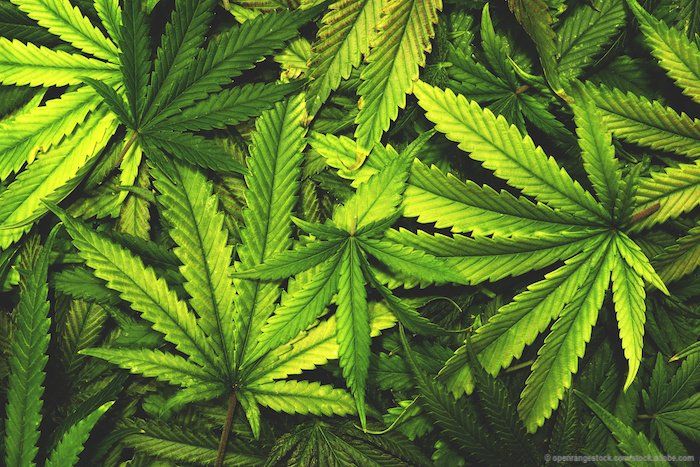Article
A Rising Tide of Drug Use and Disorders
Author(s):
A recent report provides a global update on the growth of drug use and its consequences.

GLOBAL MENTAL HEALTH
The worldwide drug crisis is even worse than previously thought, according to the UN’s World Drug Report 2019booklet, “Global Overview of Drug Demand and Supply.”
The number of persons who have drug use disorders and require treatment services is currently estimated at 35 million, up from 30.5 million, and the number of deaths resulting from drug use rose to 585,000 in 2017. Meanwhile, prevention and treatment efforts continue to fall short.
Following are highlights of the drug use and drug use disorders report.
Drug use and disorders continue to proliferate
• Worldwide in 2017, an estimated 271 million persons aged 15 to 64 years (5.5%) had used drugs at least once in the previous year, up by 30% from 2009.
• The use of synthetic drugs and the nonmedical use of prescription medicines have expanded along with the use of cannabis, cocaine, and heroin. Drugs are more potent, and potential combinations of drugs are increasing. New psychoactive substances have been synthesized, mostly stimulants, cannabinoids, and opioids.
• Nonmedical use of pharmaceutical opioids is a growing problem. The dramatic increase in opioid overdose deaths resulting from the use of synthetic opioids (eg, fentanyl and fentanyl analogues) in North America in recent years continued in 2017. The market for the nonmedical use of tramadol continues to grow in other world regions.
• About 35 million of the estimated 271 million past-year users of any drug in 2017, or close to 13%, are estimated to have drug use disorders.
Cannabis, opioids, amphetamines, “ecstasy,” and cocaine>

Cannabis, opioids, amphetamines, “ecstasy,” and cocaine
• Cannabis remains the most frequently used drug. In 2017, there were an estimated 188 million past-year users (3.8% of the global population aged 15 to 64 years). The annual prevalence of cannabis use was highest in North America (13.8%). Cannabis use is reported as stabilizing in Western and Central Europe, but since 2010 it increased considerably in the Americas, Africa, and Asia.
• Opioids use accounted for 110,000 (66%) of the 167,000 deaths attributed to drug use disorders in 2017. New highs in the number of opioid overdose deaths in North America are attributed mostly to the use of fentanyl and its analogues. An estimate of 53.4 million past-year users of opioids in 2017-1.1% of the global population aged 15 to 64 years-is 56% higher than the previous estimate of 34.3 million in 2016. North America had the highest past-year prevalence of opioids use (4.0%).
• There were an estimated 28.9 million past-year users of amphetamines, or 0.6% of the global population aged 15 to 64 years, in 2017. The past-year prevalence was highest in North America (2.1%), where nonmedical prescription stimulants and methamphetamine were the main forms of amphetamines use, with indications of an increase in methamphetamine use.
• Past-year use of ecstasy is estimated at 21.3 million persons worldwide, or 0.4% of the 15 to 64 population. Rates of past-year use are relatively high in Oceania, West and Central Europe, and North America. High-purity powder and crystalline forms of ecstasy have become available and are used frequently.
• An estimated 18.1 million persons were past-year users of cocaine in 2017. After a decline in cocaine use in North America between 2006 and 2012, there are signs of an increase.
No surprise, young people favor cannabis>

No surprise, young people favor cannabis
• Within the 15 to 64 years population, peak levels of drug use are seen among persons aged 18 to 25 years in countries in most regions and for most drug types.
• Cannabis is their most widely used drug. Of the estimated 12.6 million past-year users of any drug among students aged 15 to 16 years in 2017, an estimated 11.3 million were past-year users of cannabis.
• The annual prevalence of cannabis use in this age-group is 4.7%, compared with 3.8% for the general population aged 15 to 64 years. Past-year use is high in Europe, Oceania, and the Americas.
• The risk of cannabis dependence has been estimated at 9% among those who have ever used the drug and 17% among lifetime users who started in adolescence.
Health consequences include comorbid mental health disorders>
©Nyazz/Shutterstock

Health consequences include comorbid mental health disorders
• In addition to drug use disorders, the health consequences of drug use may include mental health disorders, HIV infection, liver cancer and cirrhosis associated with hepatitis, overdose, and premature death. The greatest harms are those associated with the use of opioids and with injecting drug use.
• Recognition of co-occurring mental health disorders among persons with substance use disorders has been increasing. Comorbidity of substance use and mental health disorders is relevant because of the high prevalence of comorbidity and the difficulty of managing it and the association with poor outcomes (eg, psychiatric hospitalizations and suicide).
• In addition to the estimated 585,000 deaths resulting from drug use in 2017, an estimated 42 million years of “healthy” life were lost. Half of disability-adjusted life years (DALYs) were attributed to years of life lost because of premature death and half to years lived with disability.
• Over the past 3 decades, the number of deaths and DALYs attributed to drug use have roughly doubled, increasing by 134% and 81%, respectively.
• In 2017, the use of opioids contributed to 79% of the DALYs associated with drug use disorders and 52% of total DALYs attributed to the use of drugs.
Drug treatment suffers from limited availability and access
• The availability of and access to treatment services for persons who have drug use disorders remains limited-only 1 in 7 receives treatment each year.
• Drug treatment is not always made easily accessible to all those who need it most. For example, substance use tends to progress to drug use disorders more quickly in women than in men, but women may be afraid or unable to seek treatment because of fear of legal issues, social stigma, and other obstacles and concerns.
• In almost all regions, an increasing proportion of the treatment provided for drug use disorders is for cannabis as the primary drug of concern; 43% to 83% of persons younger than 20 years reported cannabis as their primary drug of concern.
• Opioids, especially heroin, remained the main drug for which persons received treatment in Europe and Asia.
References:
1. Global Overview of Drug Demand and Supply. World Drug Report 2019 (United Nations publication, Sales No. E.19.XI.8). Accessed July 1, 2019.






